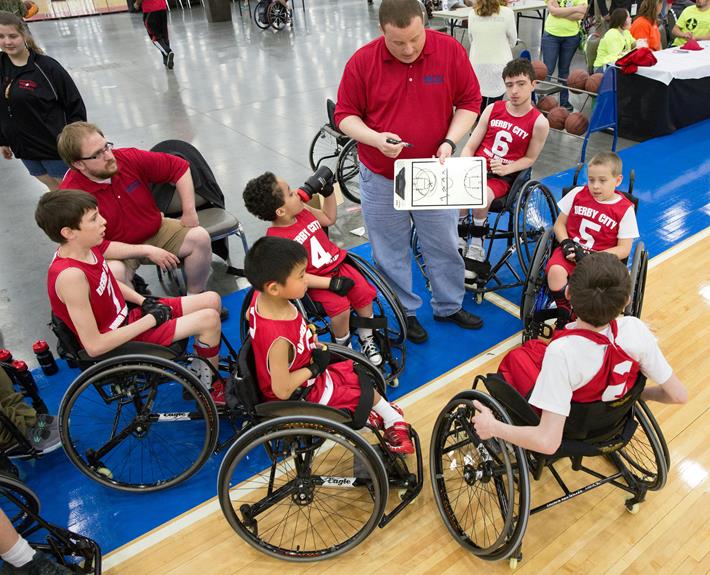Top Vertical Leap Tests for Basketball Players
To improve your vertical leap for basketball, focus on essential tests like the Standing Vertical Jump that measures lower body power and the Running Vertical Jump which examines dynamic athleticism.
The Depth Jump test enhances lower body power by evaluating power generation efficiency, while the Drop Jump assesses explosiveness post-box drop, assisting in tailoring training.
Assess leg power imbalances with the Single-Leg Vertical Jump test, pivotal for agility and leap capacity.
These tests inform tailored training programs for basketball players, hinting at further insights available for enhancing your performance.
Key Takeaways
- Standing Vertical Jump Test measures explosive lower body power for basketball performance.
- Running Vertical Jump Test evaluates dynamic power and agility in motion.
- Depth Jump Test enhances lower body power and reactive strength.
- Drop Jump Test assesses explosiveness and power generation speed.
- Single-Leg Vertical Jump Test identifies strength imbalances and improves leaping ability.
Standing Vertical Jump Test
The standing vertical jump test assesses your explosive lower body power by measuring how high you can jump from a standing start.
It’s an important evaluation for basketball players, showcasing your ability to generate force quickly, essential for those slam dunks and powerful rebounds on the court.
Coaches and trainers use the results of this test to design personalized training programs to enhance your performance.
By improving your standing vertical jump, you can boost your agility, defensive skills, and scoring opportunities during games.
Running Vertical Jump Test
Make a seamless shift from evaluating your explosive lower body power with the standing vertical jump test to appraising your dynamic power in motion with the running vertical jump test.
In basketball, the running vertical jump test is a key tool for gauging your ability to generate power and elevate quickly in game-like scenarios. This dynamic evaluation involves taking a running start before leaping vertically to reach your maximum height.
It simulates the need to explode off the ground while in motion, replicating the demands of gameplay.
Coaches and scouts use this test to measure your dynamic athleticism and how effectively you can shift power from running to jumping. Focus on mastering this test to showcase your explosive power and agility on the basketball court.
Depth Jump Test
Enhance your explosive lower body power and assess your stretch-shortening cycle efficiency with the Depth Jump Test. This test measures how quickly you can generate power by stepping off a box and immediately jumping vertically.
It’s crucial for evaluating your ability to produce force rapidly during dynamic movements, essential for explosive actions in basketball. Depth jumps are fantastic for improving reactive strength and enhancing your vertical jump performance.
Coaches and trainers use this test to track your progress in power output and lower body explosiveness over time.
Make sure to incorporate the Depth Jump Test into your training routine to develop the necessary skills for excelling in vertical jumps and maximizing your force output.
| Aspect | Importance | Benefits |
|---|---|---|
| Power Generation | High | Enhances Explosiveness |
| Stretch-Shortening Cycle Efficiency | High | Improves Reactive Strength |
| Lower Body Strength | Medium | Boosts Vertical Jump |
| Dynamic Movements | High | Enhances Force Output |
Drop Jump Test
Assess your reactive strength and explosiveness with the drop jump test by performing a quick jump after dropping off a box.
This dynamic assessment is essential for evaluating your power generation and vertical jump performance, especially in basketball.
Here are some key points to keep in mind about the drop jump test:
- Involves dropping off a box and immediately jumping upon landing.
- Helps coaches tailor training programs to enhance vertical jump performance.
- Commonly used in basketball to assess power generation.
- Mimics the fast movements required in basketball games.
- Provides insights into your ability to generate power quickly.
Single-Leg Vertical Jump Test
Evaluating leg power and explosiveness in basketball players, the single-leg vertical jump test assesses their ability to jump as high as possible off one leg.
This test is pivotal in identifying any strength imbalances between the legs that could impact performance on the court. By mimicking in-game movements, the single-leg vertical jump test provides coaches with valuable insights to tailor specific training programs for players.
A strong performance in this test can directly enhance a player’s agility and leaping ability during gameplay. Check out the table below for a quick overview of the key aspects of the single-leg vertical jump test:
| Single-Leg Vertical Jump Test |
|---|
| Assess Leg Power |
| Identify Strength Imbalances |
| Enhance Agility |
| Improve Leaping Ability |
| Tailor Training Programs |
Multi-Directional Vertical Jump Test
Jumping off from the single-leg vertical jump test, the Multi-Directional Vertical Jump Test evaluates a player’s vertical leap in various directions to assess explosive power and directional control.
This test is important for NBA players as it measures their ability to change direction swiftly while maintaining a high vertical jump.
It provides a thorough measure of an athlete’s explosive power and body control, essential for enhancing performance on the court.
Coaches and trainers rely on this test to understand a player’s vertical jump capabilities, especially in dynamic game situations requiring quick and precise movements.
By targeting these specific skills, the Multi-Directional Vertical Jump Test plays a critical role in improving overall performance for basketball players.
- Measures explosive power and directional control
- Evaluates vertical leap in different directions
- Essential for understanding an athlete’s abilities
- Helps enhance performance on the court
- Target specific skills for improved overall performance
Reactive Strength Index Test
To grasp an athlete’s reactive power, the Reactive Strength Index (RSI) test assesses how quickly they can shift from an eccentric to a concentric muscle action.
This test is essential for evaluating explosive power and quick reactions needed in dynamic sports like basketball. The RSI value, calculated by dividing jump height by ground contact time during a jump, indicates efficient utilization of the stretch-shortening cycle important for maximizing vertical jump performance.
Coaches use the RSI test to customize training programs, improve jump performance, and enhance overall athletic abilities in basketball players. Below is a table summarizing key aspects of the RSI test:
| Aspect | Description |
|---|---|
| Purpose | Measure speed between eccentric and concentric muscle actions |
| Calculation | Jump height divided by time on the ground during a jump |
| Importance | Assess reactive power, explosive strength, and efficiency in movements |
Optojump Vertical Jump Test
Utilizing infrared technology for precise measurements, the Optojump Vertical Jump Test is a cutting-edge system that accurately evaluates vertical jump height.
This test is widely used in professional sports, particularly in basketball, to appraise athletes’ lower body power.
Here are some key points about the Optojump Vertical Jump Test:
- The system measures flight time and ground contact time.
- It provides detailed data for analysis and monitoring of vertical jump performance.
- Coaches, trainers, and athletes can benefit from real-time feedback.
- Results help in identifying strengths and weaknesses for tailored training programs.
- The Optojump system is a valuable tool in gauging and improving vertical jump abilities for basketball players.
Force Plate Vertical Jump Test
When evaluating vertical jump performance in basketball players, a reliable and accurate method utilized is the Force Plate Vertical Jump Test.
This test measures ground reaction forces during a vertical jump, providing detailed data on jump height, power output, and rate of force development.
Widely considered a reliable assessment tool, the Force Plate test is commonly used in sports science research and athlete training programs.
By analyzing the results of this test, coaches and trainers can pinpoint an athlete’s strengths and weaknesses in jumping ability.
Incorporating the Force Plate Vertical Jump Test into training programs can help tailor workouts to improve specific aspects of vertical leap performance, ultimately enhancing overall athletic capabilities.
Frequently Asked Questions
Who Has the Highest Vertical Leaps in the Nba?
You possess an interest in the NBA’s high flyers. Jordan, James, and Wiggins showcase impressive vertical leaps, with Jordan reigning at 48 inches. DJ Stephens holds the combine record at 46 inches. Notable players like Bryant and Westbrook excel too.
What Is the NBA Max Vertical Jump Test?
You show off your vertical leap in the NBA Max Vertical Jump Test, proving your leg power explosiveness. Teams assess your athleticism, rebounding, shot-blocking, and dunking potential through this test, important for agile players.
Is 70 Cm a Good Vertical?
Yes, 70 cm is a good vertical leap. It shows strong lower body power and explosiveness. Achieving this level can greatly enhance your performance on the court, giving you a competitive edge as an elite basketball player.
Is a 44 Inch Vertical Good?
Having a 44-inch vertical leap is excellent! It showcases your impressive leaping abilities and explosiveness on the court. With this level of jump, you can achieve remarkable dunks and blocks, giving you a competitive edge in basketball.
Conclusion
To sum up, mastering these top vertical leap tests can take your basketball game to new heights. So, whether you’re aiming to dunk like Jordan or soar like LeBron, incorporating these tests into your training routine is key.
Remember, practice makes perfect, and with dedication and hard work, you’ll be reaching for the stars in no time. Just like a basketball player aiming for the hoop, keep pushing yourself to reach new heights.














